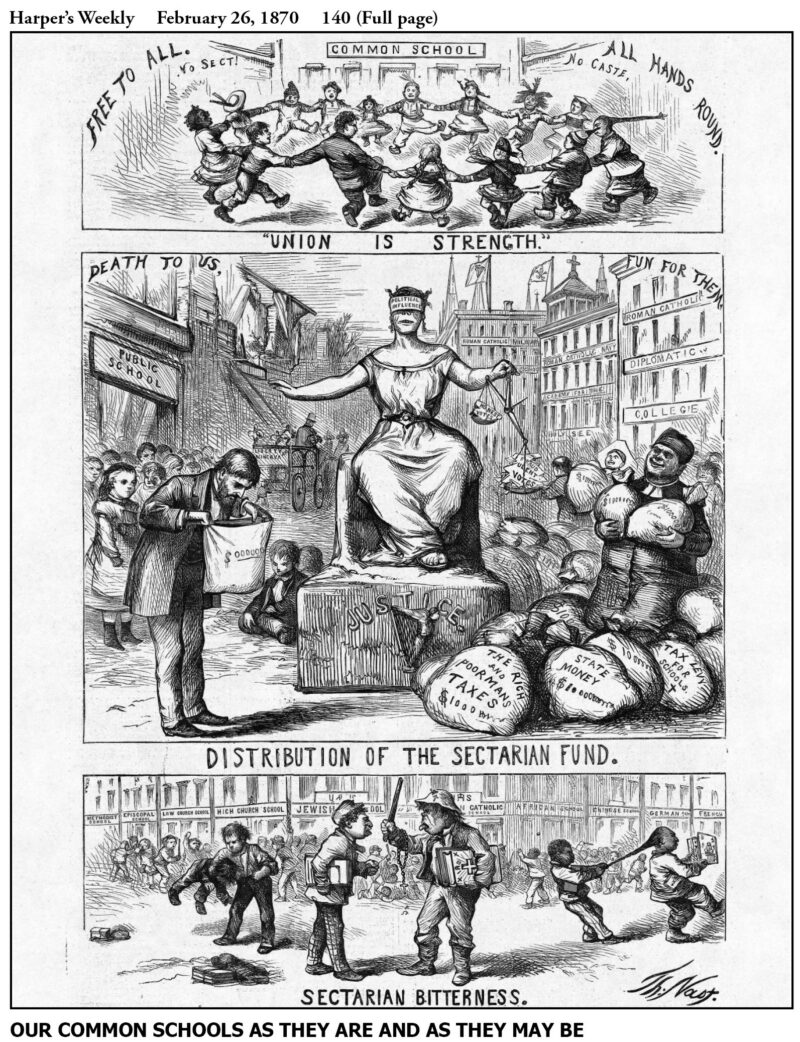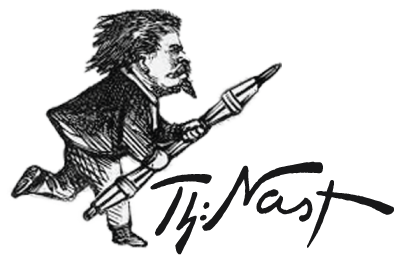
Harper’s Weekly – February 26, 1870
After the Tweed Ring obtained more power in state as well as city government, Church schools received a large proportion of common school funding. Nast’s three-vignette cartoon was, in effect, right on the money. Justice, with an Irish scale weighed down with “Fraudulent votes,” gave bags full of state and local tax money to a gloating priest, while the public school representative got none. Below, ten different sectarian schools featured fighting everywhere, with a dominant Irish Catholic boy threatening in front.
Although Tweed, Hall and Hoffman were all non-Irish Protestants, the Ring depended on Irish Catholics to maintain power. Without specific incriminating evidence with which to attack the Ring prior to July 1871, Nast tapped into nativist anti-Irish sentiment to establish his villains. Their general behavior and affiliation with the Pope, Catholic dogma, and the battle over sectarian education made it easy to do so.
